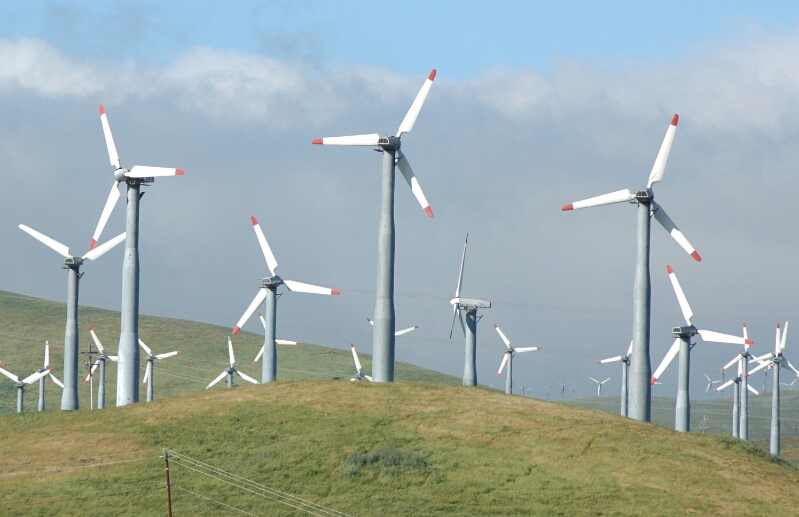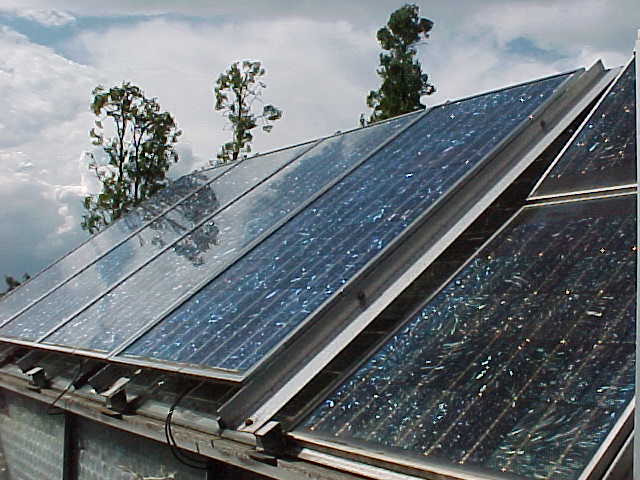 Fossil fuel divestment, even as it grows in popularity, has its share of detractors, and one of the issues that comes up for them is the potentially high cost (said to be as much as $5 trillion USD for full divestment). However, that figure isn’t nearly as cut-and-dried as it might seem, because pulling money out of fossil fuel investments doesn’t mean that the cash will sit idle, as there is a world of opportunity for investors looking to not only earn a good return, but to also back the emerging green economy.
Fossil fuel divestment, even as it grows in popularity, has its share of detractors, and one of the issues that comes up for them is the potentially high cost (said to be as much as $5 trillion USD for full divestment). However, that figure isn’t nearly as cut-and-dried as it might seem, because pulling money out of fossil fuel investments doesn’t mean that the cash will sit idle, as there is a world of opportunity for investors looking to not only earn a good return, but to also back the emerging green economy.
We’ve previously covered the whys and hows of fossil fuel divestment, and in this piece (originally published at Eden Keeper), we points out the alternative financial services and
investment products that are currently available for investors that want to take climate change mitigation into their own hands (and their own portfolios).
Fossil Fuel Divestment (Part II: Reinvesting in the Green Economy)
Divesting our money from fossil fuel producers is a loud and clear statement that we will not pay their penalty for destroying the trust God invested in us as stewards of creation. We share in the guilt of those who are destroying the earth, if we do not take confident steps to address climate change by investing in and supporting production of clean, renewable energy sources. In our series on Divestment and Reinvestment for religious institutions, Part One looked at Fossil Fuel Divestment – the Whys and Hows. In this article, Part Two, we are looking at financial services and investment products currently available for conscientious investors wanting to take climate change mitigation into their own hands.
The International Energy Agency reports that renewable energy “[c]osts have been decreasing and a portfolio of renewable energy technologies is becoming cost-competitive in an increasingly broad range of circumstances.” The wind power industry has grown at a rate of 25 percent annually during the past five years, and the solar industry by a 50 percent annual rate. The US Energy Information Administration reports that renewable energy will make up nearly a third of all new electricity generation capacity in the US in the coming three years.
Reinvesting in Clean Energy Now Is a Prudent Strategy
Market responses are growing increasingly negative towards fossil fuel producers, creating a carbon bubble around fossil fuel investments that is stretching thin. Nobody wants to be holding the bubble when it bursts. Industry regulations, like imposing a carbon tax and removing subsidies, will make fossil fuel extraction potentially very expensive, pricing many players out of the market, significantly devaluing fossil fuel stocks. Selling their shares in fossil fuels and reinvesting in clean energy has now become the prudent strategy for conscientious investors.
SRI: Sustainable & Responsible Investing
Institutional investors may wish to enlist the services of financial advisors or investment consultants with expertise in sustainable and responsible investing (SRI) strategies. The following links are examples, not endorsements, of available resources:
Green America – Green America is proud to partner with 350.org on the national Go Fossil Free divestment campaign. The financial services companies listed are certified members of our Green Business Network® (m), and can help you divest from fossil fuel companies and invest in fossil-free options.
USSIF – U.S. Forum for Sustainable and Responsible Investing. This is a membership association for professionals, firms, institutions and organizations engaged in sustainable and responsible investing.
Understanding Traditional Investment Asset Classes
Asset Class: Public Equities
Indexes:
FFIUS: Specifically excluding the Carbon Tracker 200, a list of top 100 public coal and 100 public gas companies, the FFIUS closely tracks the S&P 500, and has been adopted as the official list by 350.org, the organizational founder of the global Go Fossil Free Divestment movement.
FirstTrust ISE Global Wind Energy Index Fund: Companies in this index are identified as providing goods and services exclusively to the wind energy industry (66%), and significant participants in the wind energy industry despite not being exclusive to it (33.33%).
Direct Stock Ownership and Separate Accounts:
Investor choices include purchasing shares in companies generating power from renewable energy or producing goods and services, e.g., manufacturing wind turbines or solar panels for renewable energy producers. In addition, investors may wish to explore companies outside of the energy sector that provide support to clean energy producers. Some of these sectors include Services and Technology, Industrial Goods, and Consumer Goods.
Mutual Funds:
USSIF and Green America have lists of all investment products, including mutual funds, offered by members. Readers may screen listings for a broad range of sustainability criteria, including climate change mitigation in their portfolio selection, or are specifically investing in clean energy. Be aware, though, that some of the funds listed may not be specifically excluding fossil fuel companies.
Asset Class: Fixed Income
Bonds:
Investors can screen fixed income corporate bonds the same way they screen public equities. Prefer bonds of companies offering renewable power generation and companies in sectors that are supporting the clean energy economy. Other fixed income options include World Bank Green Bonds, and municipal bonds for clean energy transit-oriented development projects, and other projects implementing clean energy policies.
Fixed Income Mutual Funds:
In addition to purchasing bonds directly, investors can add fixed income to their portfolios by purchasing bonds directly, or by investing in fixed income mutual and exchange traded funds. Screen listings for fixed income mutual funds with climate change and/or clean energy as criteria in their portfolio selection strategy.
Crowdsourced Solar Investing:
Mosaic: Mosaic connects qualified borrowers seeking financing for solar projects with qualified investors seeking steady returns. The fundamentals of solar make it an attractive component of a diversified investment portfolio — reliable technology, predictable energy output, stable cash flows, and projects carefully vetted and structured to minimize risk while maximizing benefits to investors and to the planet.
Loan Funds:
Many community development financial institution (CDFI) loan funds promote clean energy projects. These community improvement projects can include clean energy transit-oriented development, energy efficiency retrofits for buildings, sustainable agriculture, and other environmentally oriented projects. USSIF and Green America offer listings, as does CARS, an independent CDFI rating source.
Asset Class: Cash & Equivalents
Savings accounts, checking accounts, and certificates of deposit (CDs) from Community Development Banks and Credit Unions are convenient investments while promoting environmental progress and local impact. Community Development Banks and Credit Unions offer a wide variety of financing for commercial real estate, affordable housing, small businesses, and non-profit organizations. They also regularly offer loans for energy efficiency retrofits, as well as other green initiatives in low- and middle- income communities. Find out more online at:
• National Federation of Community Development Credit Unions
• Community Development Bankers Association
Understanding the Alternative Investment Asset Classes
Asset Class: Private Equities
Alternative investments, such as private equity funds, venture capital funds, and hedge funds are available to institutional investors. Many of these funds specifically support renewable clean energy, energy efficiency, environmentally sustainable companies, sustainable agriculture and forestry, and waste management.
Asset Class: Real Estate
Real estate investments can vary widely, from direct investments in farms, land, and forests, to more indirect investments in property-related loan instruments. Real estate is the most popular alternative investment asset class. Climate-change related investments include urban infill development, responsible community reinvestment, green building, brownfield redevelopment, smart growth and transit-oriented development, nature conservation, and sustainable farm/ranch/timberland.
Understanding Investment Fees
Regarding overall investment fees and services obtained, it’s helpful to understand how financial service providers get paid and that any of these ways may be better, depending on investor circumstances:
• By commission – a sales charge, often a “front-end load” based on a percentage of the amount of money initially invested, or a “back-end load” charged when investments are sold.
• By a percentage of assets under management – the typical range is between 0.25% and 2.0% of money being managed.
• By hourly rate – typically between $100 and $400 per hour, usually independent of the amount of assets under management.
The following example is from gofossilfree.org:
“What if you are invested in a low fee passive index fund and would like to switch to a fossil fuel free mutual fund but are uncomfortable with the higher fee?”
“The active (higher fee) vs. passive (lower fee) fund question is one that should take performance into account.
“For example, Vanguard’s highly rated Balanced Index Fund does have low embedded fees of 0.24%. Nonetheless, the Green Century Balanced Fund (with fees up to 1.48%) has outperformed the Vanguard Balanced Index Fund over the past year, three years, five years, and ten years, including fees.
“The bottom line is that investors who had chosen Green Century Balanced Fund instead of Vanguard Balanced a decade ago have had superior performance after fees. The long-term ability of a fund manager to outperform its peers to recoup any fee differential is a relevant consideration when evaluating investments.”
The Clean Power of Fossil Fuel Divestment and Reinvestment
This movement is about awareness. Fossil fuel divestment is a strategy, a building up of critical mass and the energy sustaining it is both clean and renewable, powered by the rippling waves of participants and supporters. Every effort that increases awareness adds to our stored energy supply, and every new declaration of participation in the movement creates a power surge moving us closer to our political goal.
We are letting our policy leaders know that fossil fuel industries are toxic assets and it is politically unacceptable to support them or be supported by them. We are defunding them and the politicians who support them. And we are shifting our financial support into high gear, transitioning with our clean energy investments into the future earth our grandchildren will inhabit. This is the battlefront in the war for our future generations’ right to survive, and we must step confidently into the future of a green, clean economy, starting today. Raise your flag of moral authority on behalf of your grandchildren’s future, and demand divestment from fossil fuels in your next opportunity at your House of Worship. Request that they reinvest divested funds into the green, clean economy, starting today.
Please share these articles and start or join a divestment campaign today, online at gofossilfree.org
Disclaimer: This article is provided for informational purposes only and does not constitute investment advice.


